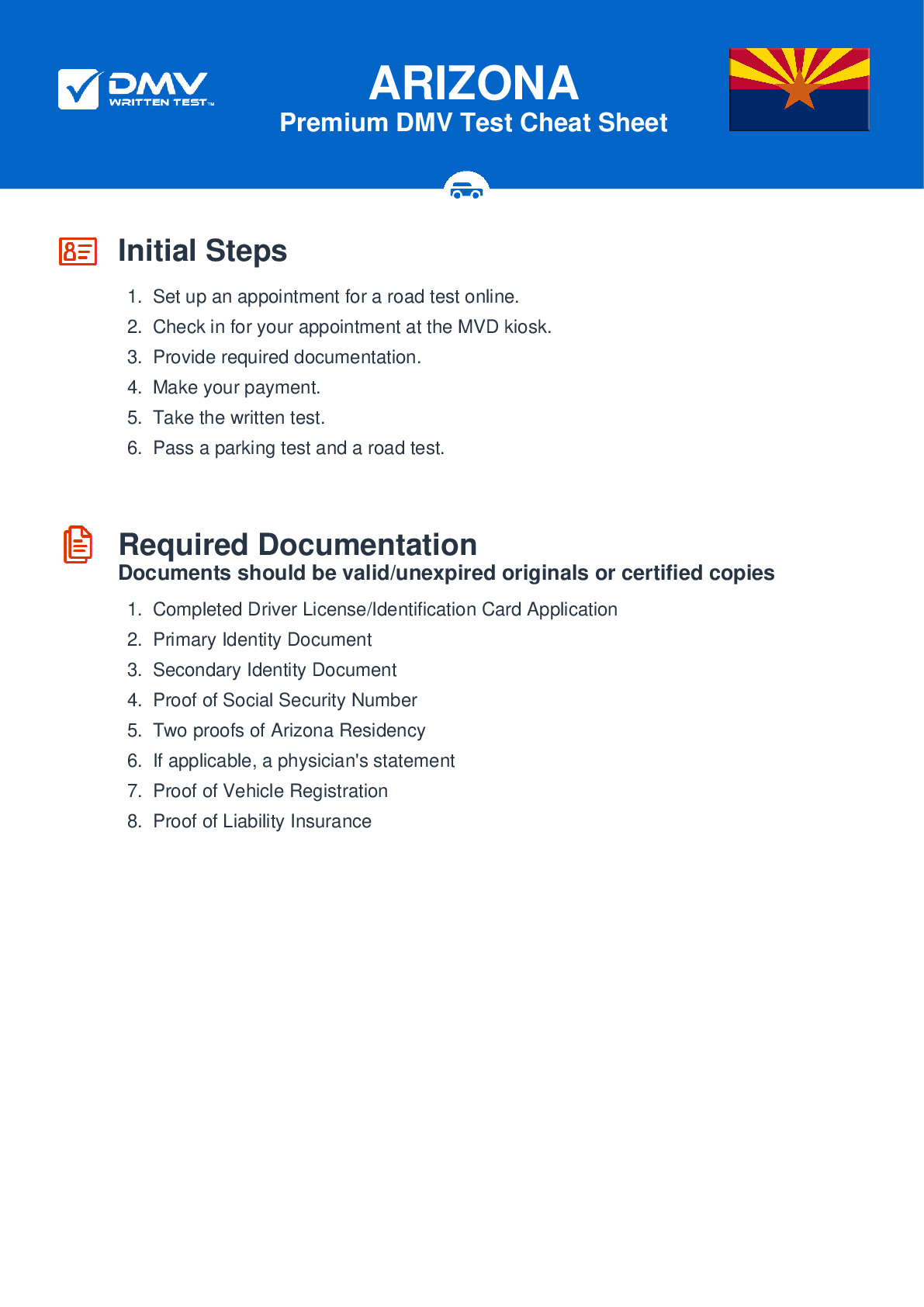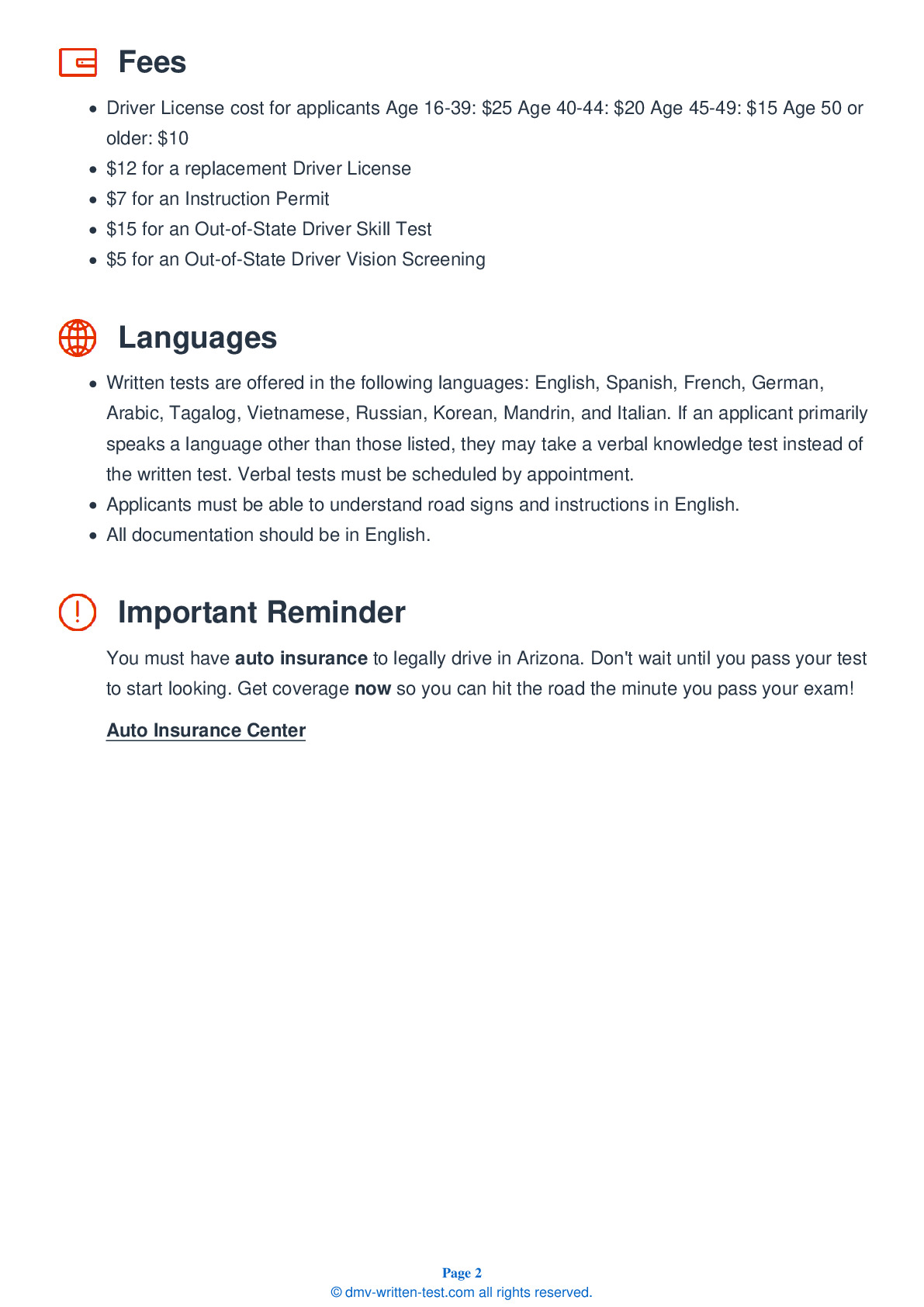2026 Arizona Permit Test 13
The following questions are from real DMV written tests. These are some of the actual permit questions you will face in Arizona. Each permit practice test question has three answer choices. Select one answer for each question and select "grade this section." You can find this button at the bottom of the drivers license quiz. For a complete list of questions and answers for Arizona please visit https://cheat-sheets.dmv-written-test.com/en/arizona/car.
Number of Tests
Number of Question
Passing Score
1. This sign is used to warn drivers about:

Explanation
Warning signs are usually yellow with black markings. They alert you to conditions that are immediately ahead. This sign is used to warn drivers about an upcoming curve to the right.
2. Allow extra space in front of your vehicle when following a:
Explanation
Allow for extra space when driving behind a motorcycle. Motorcycles can stop more quickly than other vehicles can and you must have adequate room to stop if the motorcyclist brakes or falls off. Also, remember that motorcycles are difficult to see at night because they only have one tail light.
3. You may legally block an intersection:
Explanation
Even if the light is green, you may not enter an intersection unless you can get completely across before the light turns red. If you block the intersection, you can be cited.
4. Slowing down just to look at collisions or anything else out-of-the-ordinary:
Explanation
Avoid "rubbernecking," or slowing down to look at collisions or anything else out-of-the-ordinary. This helps to relieve traffic congestion.
5. If bad weather makes it difficult for you to see clearly, you should:
Explanation
When it is difficult to see due to darkness or poor weather, increase your following distance. This will give you more time to react to hazards that you may not see in advance.
6. This sign means:

Explanation
This sign warns a driver of a change in direction or a narrowing of the road. A driver may find several of these signs on the outside of a sharp curve or on approaches to a narrow bridge.
7. Which lane must you be in before making a left turn from a one-way street?
Explanation
When making any turn, turn from the lane closest to the direction you wish to travel into the first available legal lane. If you are making a left turn from a one-way street, this means that you would make the turn from the lane nearest to the left curb.
8. A broken yellow line beside a solid yellow line indicates that:
Explanation




